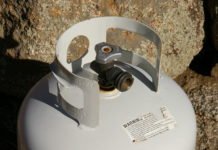Advertisement
When Is The Next Lunar Eclipse Near Me
Watch Darrell Heath with the UALR College of Arts, Letters, and Sciences, explain when and where the next solar eclipse will take place.
Solar Eclipse 2017 August 21st & What Glasses To Wear
With the start of each New Year, astronomers everywhere look forward with anticipation to a variety of celestial events, everything from meteor showers, planetary conjunctions, and the occasional comet.
But nothing gets them quite so stirred up as does the prospect of seeing one of Nature’s greatest spectacles: a total solar eclipse of the Sun.
In terms of sheer awe and grandeur nothing rivals it, and that’s not just hyperbole on my part. If there is a total solar eclipse happening somewhere then you can bet that thousands of astronomers from all over the
world will begin making plans months (or even years) in advance to be within the path of totality. It’s been 26 years since America last saw a total solar eclipse and on August 21st of 2017 we will finally have another.
On that day, the moon’s shadow will race across the U.S. from the Pacific northwest to the southeastern Atlantic seaboard, most Americans will literally be within a day’s drive of the path of totality. But let’s backup for just a moment and talk about what an eclipse is.
Simply put, an eclipse is what happens when either the moon or the Earth blocks out some, or all, of the light from the Sun. In a lunar eclipse the Earth passes in front of the Sun and then casts its shadow upon the moon.
This always happens during a full moon phase when the Earth is positioned in between the Sun and moon.
A solar eclipse always happens at new moon, when the moon lies in between the Sun and the Earth and its shadow gets cast somewhere upon the Earth. Since we have a full and new moon each month you may well wonder why it is that we don’t see an eclipse of some sort each month as well. The reason we don’t has to do with the moon’s orbit around the Earth, which happens to be at an inclined angle of about 5 degrees relative to the Earth’s orbital plane around the Sun.
The upshot of all this is that to have an eclipse you must have the Sun, moon, and Earth all aligned in just the right way at just the right time. The points where the orbital planes of both the Earth and the moon intersect is called a “node”. To get a solar eclipse then, the moon must be at a node during new moon phase, something that doesn’t always happen each and every month. And it’s not just a matter of timing and position, it’s also a matter of distance. Especially in order to get a total solar eclipse.
You see, the moon’s orbit around the Earth is elliptical in shape and this means that sometimes it’s a little closer to us and at other times it’s a little bit further away. Why is this important? To answer that you must appreciate an incredible cosmic coincidence. Our Sun is some 864,000 miles in diameter, which is about 400 times the size of the moon’s 2,160-mile diameter. The Sun also happens to be 400 times further away from us than the moon is.
These two facts mean that the discs of the Sun and moon, from our perspective here on Earth, appear to be the same size and that’s why we can see the new moon cover up the disc of the Sun during a total solar eclipse. But note that the moon must be not only at a node and at new phase during a total solar eclipse- it also must be at just the right distance within its elliptical orbit to cover the Sun’s disc so precisely.
You and I are lucky to be living in just the right place and at just the right time to see eclipses of this sort because the odds of such cosmic coincidences happening with such precision in other solar systems are very low.
I mentioned at the beginning of the program that the moon’s shadow will race across the
United States on August 21st, so now might be a good time to talk about the anatomy of shadows. During an eclipse the moon casts a cone-shaped shadow out into space and then onto the Earth’s surface. This shadow consists of two parts. The narrow, darkest, and innermost part of the shadow is known as the “umbra”. If you want to see a total solar eclipse, then you must be somewhere within the umbra. The umbra may be as much as 167 miles wide during some eclipses but on August 21st it will only average about 65 miles in width.
The outermost part of the shadow, which is also quite broad and much lighter than the umbra, is called the “penumbra”. If you are viewing an eclipse from within the penumbra, then you will only see a partial solar eclipse. There is one other solar eclipse type besides a total and partial eclipse I want to mention and that’s an “annular” eclipse. With an annular eclipse the moon is at its furthest most distance from Earth so the lunar disc is not quite large enough to entirely cover the Sun’s disc.
This will leave a thin, but very bright, ring (or “annulus”) around the edges of the moon’s disc. During the early morning hours of August 21st, the moon’s shadow will first strike the Earth out in the North Pacific. At 10:15 AM PDT it will make landfall along the Oregon coast. From there the path of totality will cut a swath through Idaho, Montana, Wyoming, Nebraska, Kansas, Missouri, Illinois, Kentucky, Tennessee, North Carolina, Georgia, and then South Carolina before heading on out into the Atlantic by around 2:49 PM EDT.
The penumbra will cover almost all North America and here in Little Rock you will get to see a partial eclipse beginning at around 11:47 AM CDT when you will see the lunar disc make first contact with the Sun. Eclipse maximum will occur at around 1:18 PM when the new moon will have covered nearly 90% of the Sun. The show ends here in Little Rock by 2:46 PM when the moon’s edge finally clears the Sun’s disc. Now, here is the usual word of warning when it comes to looking at an eclipse: Do Not Look Directly At The Sun! Even if 99% of the solar disc is blocked, the remaining 1% is still 4,000 times brighter than a full moon.
And by no means should you observe the Sun through any kind of optical aid that lacks proper filters. If you are just observing with your eye then be aware that regular sunglasses will NOT be suitable. #14 grade welders glass is a good example of a safe solar viewing filter. And there are others that are available commercially online.
Special Mylar glasses such as these can be found online if you search the internet for “eclipse glasses”. Here is another safe and very cool way to observe the eclipse. Pay attention to the shadows around you, especially shadows under a tree or where the shadows from the tree are being cast upon any light-colored surface. You may notice hundreds of miniature eclipses being projected onto the ground, sidewalk, or the side of a house.
What the heck is happening here? Well the gaps in between the leaves are, in effect, acting as pinhole cameras. As the Sun’s light filters through the leaves it doesn’t just pass on through in a straight line, instead they become bent (or, “diffracted”) around the edges of the leaves that are creating the gaps and then projected as an image onto a surface.
Here’s the cool thing though, the physics of diffraction doesn’t demand that there be a round hole through which to project an image. Square-shaped openings will work just as well. If the gaps are sufficiently spaced the incoming light getting bent around the edges will all average out to create an image of the scene contained within the incident light. I wish that I could be here on the UALR campus to enjoy this spectacle with you but I am going for the REALLY big show, the Big Kahuna of eclipses – the total solar eclipse.
On August 21st I plan on being in Nebraska along the path of totality. If possible, I urge you to try and position yourself within the path of totality as well because this is where you will experience the true spectacle and majesty of a total solar eclipse. Moments before totality the ambient light becomes darker and somewhat eerie, it’s no wonder that for time immemorial humans have viewed these events with an impending sense of doom and disaster.
Animals begin to behave oddly: birds will start to roost and night time insects will begin to sing. During the last couple of minutes before totality, if you look to the northwest you may be able to see the moon’s shadow racing towards you. Thin, wavy lines of shadows known as shadow bands will appear on the ground and scientists to this day do not yet fully understand how they are created. In the last seconds before totality the thin, crescent Sun suddenly breaks up into a series of reddish colored beads, known as Bailey’s Beads.
This is the last of the Sun’s light breaking through valleys on the moon itself. This phenomenon will only last a moment and the very last bead to disappear creates a giant diamond ring in the sky. Then, in an instant, the moon’s shadow is upon you and totality has begun. The Sun now appears as a black disc in the sky and this is the only time during the eclipse that you are free to look at the Sun with your eyes or with binoculars. And believe me, you will want to.
During the next couple of minutes of totality, you can see a faint, pinkish ring encircling the Sun. This is the Sun’s chromosphere, a thin layer forming a part of its atmosphere. With binoculars, you will see what appears to be tongues of flame flickering at the edges of the disc. These are solar prominence’s and they are super heated clouds of hydrogen gas lifting off from the Sun. Stop to consider that any one of them is hundreds of thousands of miles long, many times longer than the Earth is wide.
Perhaps the most awesome sight of all will be the pearly white or pink colored halo radiating out from the solar disc. This is the Sun’s outermost atmosphere, the corona, and it extends for millions of miles out into space. In fact, it is only during an eclipse that you will ever be able to see it naked eye. But the show isn’t just restricted to what’s going on with the Sun.
If you look around the sky you will also see that a few bright stars such as Regulus in the constellation of Leo; planets such as Mercury, Mars, and Venus will also be on display. And then, after a couple of minutes the diamond ring makes another appearance, followed by the reappearance of Bailey’s Beads. You’ll need your solar glasses again at this point. But now the show is over and the new moon begins to work its way out from our line of sight to the Sun.
If you miss this show, fear not, because on April 8th, in the year 2024 the United States, Canada, and Mexico will be treated to another total solar eclipse. And guess what? The UALR campus will be within the path of totality. Okay, before I go here are a couple of suggested astronomy reads for the month.
The first is Sun, Moon, Earth: The History of Solar Eclipses, From Omens of Doom to Einstein and Exoplanets by Tyler Nordgren. This is your ideal guide for the upcoming eclipse. Nordgren packs in a lot of great historical information on how humans have perceived solar eclipses through time and how modern science has used them to confirm Einstein’s theory of relativity. The content is informative while the prose is both breezy and lyrical.
Not bad for a book that comes in at just 264 pages long. The second book is Night Sky With the Naked Eye: How to Find Planets, Constellations, Satellites, and Other Night Sky Wonders Without a Telescope by Bob King. There are plenty of great astronomy blogs out there but if I had to recommend just one for the beginning stargazer it would have to be Bob King’s Astro Bob Blog. I have been in awe of Bob for many years with his ability to make accessible the wonders of the universe to the average person. His writing is always eloquent, funny, as well as informative and this book comes with a very high rating from me in terms of a book that you should have at your side whether you are just starting out in astronomy or even if you are a veteran stargazer.
As the title says, Night Sky With the Naked Eye is a guide to the many things you can see overhead without any kind of optical aid. Few people can make the magic of the night sky come alive to a reader like Bob King; get his book, read it, and, most importantly, use it.
Be sure and visit The Night Sky web page for all the latest happenings in your sky and, until next time, be sure and take a little time to step outside and look up in both awe and wonder.
Working hours
August 21st:8:00-18:30 Hrs
Advertisement
Monday – Viewing by location
Near Me
Find The nearest location to view the most amazing solar eclipse. View our map to locate the glasses required to view this splendor.
Get A Degree
Most astronomers these days get a degree in physics, plus lots of courses in math and astronomy. Then you go to graduate school. Most astronomy departments that can award a Ph.D. are at fairly big universities. It usually takes around six years of graduate school.
The 5 Best Campus Facilities To Become An Astronomer
-
Haleakala Observatory – University of Hawaii
-
Apache Point – New Mexico State University
-
McDonald Observatory – University of Texas at Austin
-
Mount Graham International Observatory – University of Arizona
-
Big Bear Solar Observatory – New Jersey Institute of Technology (California)
Bob King
Astronomer
Robert P. King (known professionally as Astrobob), born August 9, 1953 (age 64), is an American photographer, writer, and an amateur astronomer.
Astronomer
Tyler Eugene Nordgren is an astronomer and professor of physics at the University of Redlands.
Advertisement
























